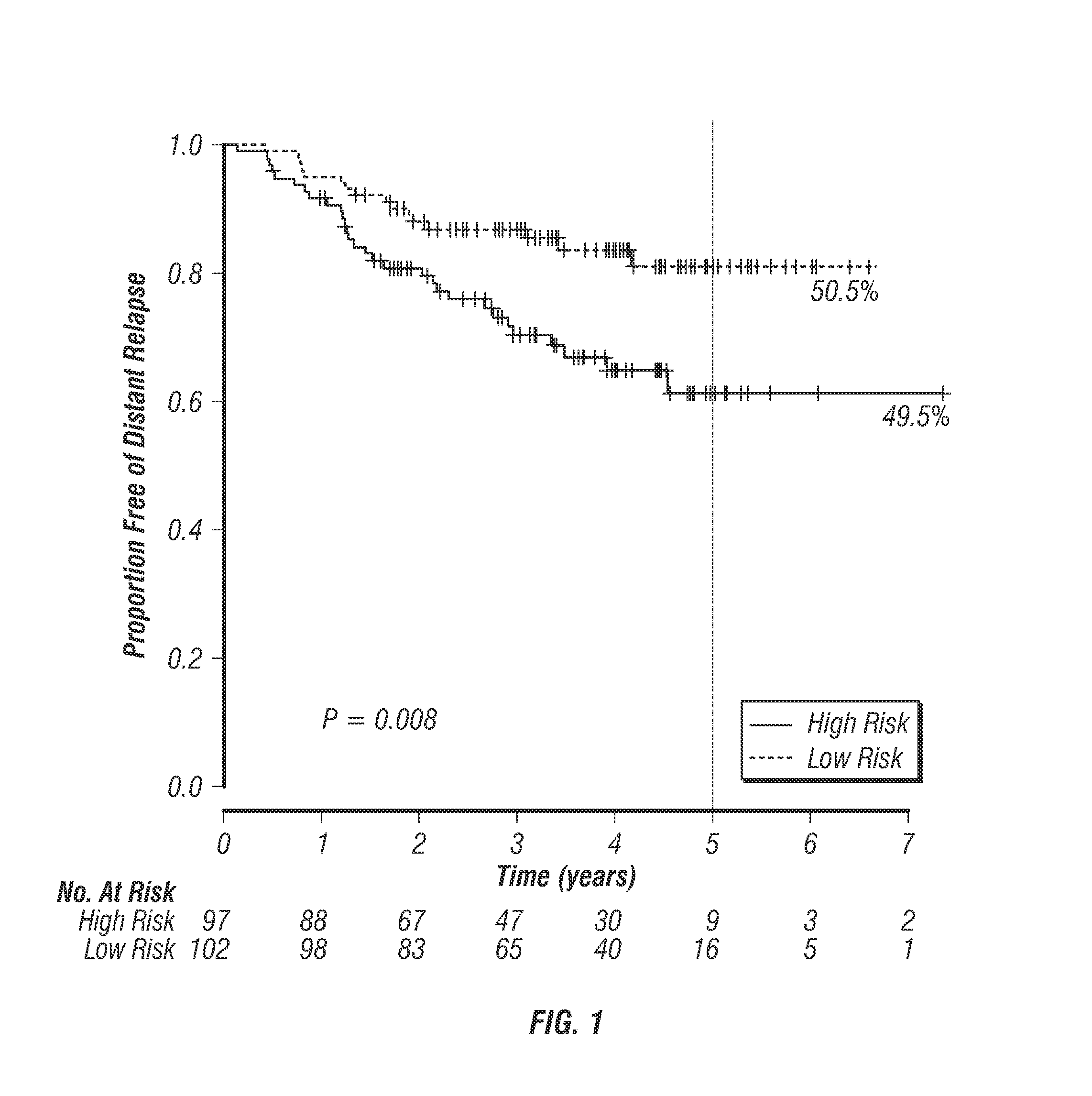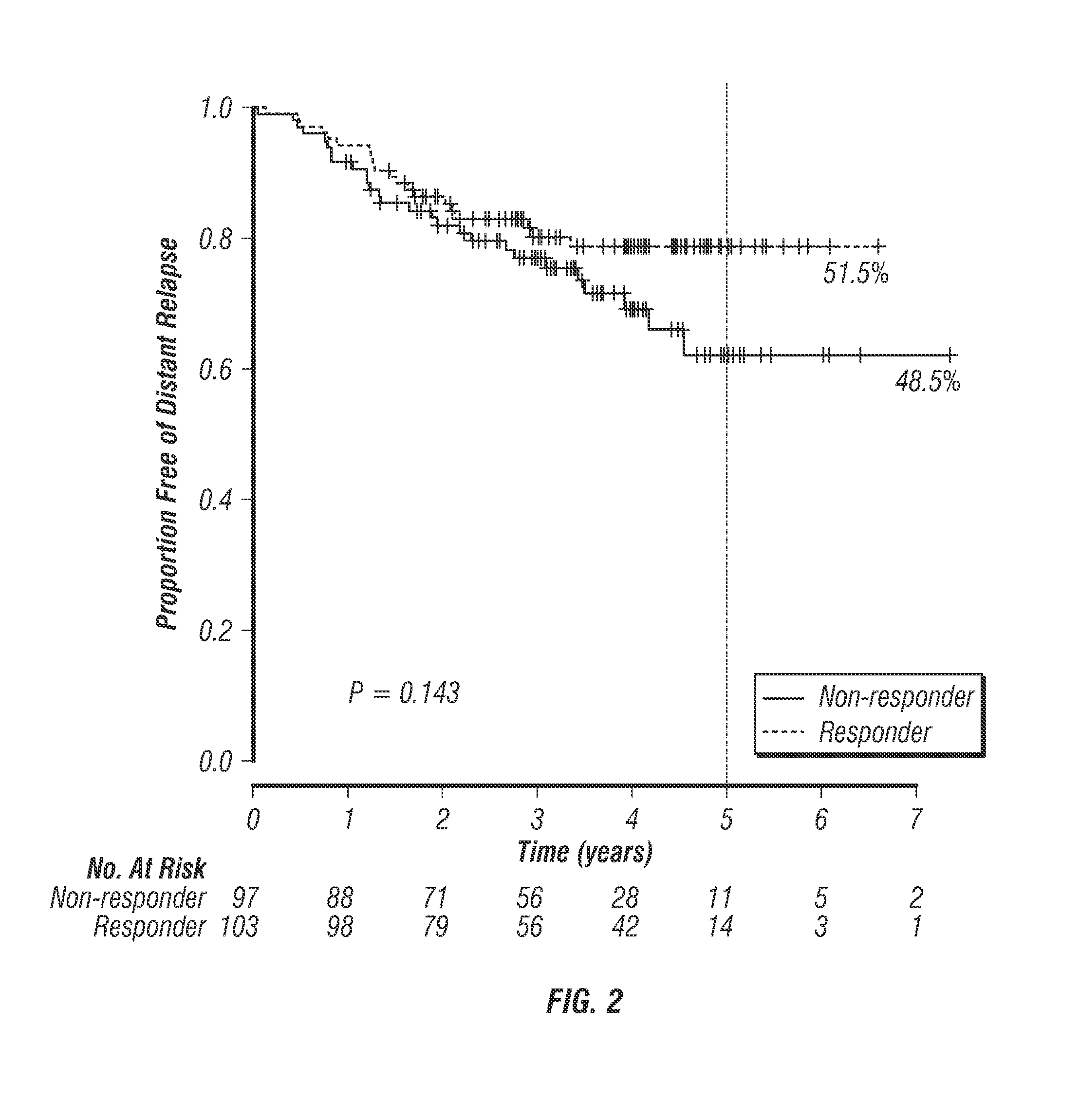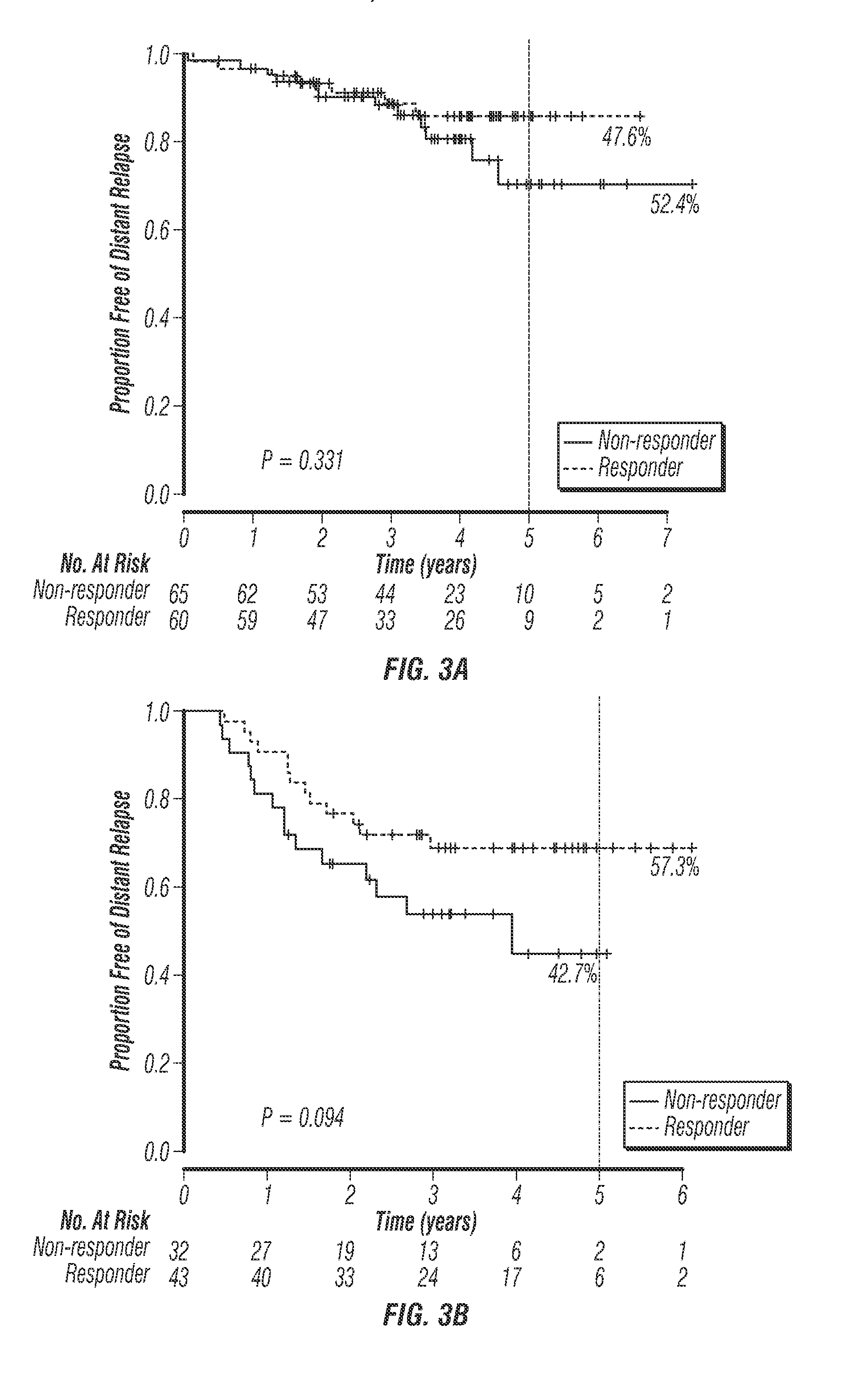Methods of evaluating response to cancer therapy
a cancer therapy and response technology, applied in the field of biology and medicine, to achieve the effect of aggressive treatment plan, less favorable treatment result, and favorable treatmen
- Summary
- Abstract
- Description
- Claims
- Application Information
AI Technical Summary
Benefits of technology
Problems solved by technology
Method used
Image
Examples
example 1
Materials and Methods
[0089]Needle biopsy samples (fine needle aspirates—FNAs or core biopsies—CBX) were analyzed in order to examine genes correlated with the selected endpoint. The genes were identified by this method using these samples and methods to standardize data were done in order to facilitate calculation of the predictor indices consistently in different sample types such as biopsies, resected tissue from an excised tumor, and frozen tumor tissue.
[0090]Patients and Samples—
[0091]Patients prospectively consented to an Institutional Research Board approved research protocol (LAB99-402, USO-02-103, 2003-0321, I-SPY-1) to obtain a tumor biopsy by fine needle aspiration (FNA) or core biopsy (CBX) prior to any systemic therapy for genomic studies to develop and test predictors of treatment outcome. Clinical nodal status was determined before treatment from physical examination, with or without axillary ultrasound, with diagnostic FNA as required. Pathologic HER2 status was defin...
example 2
Predictor of Distant Relapse after Therapy or of Resistance to Therapy
[0102]Methods for Building Predictor of Survival Outcomes as a Result of Therapy—
[0103]Distant relapse-free survival (DRFS) was used as the endpoint of favorable outcome of therapy to build the predictor genes. Prior to analysis, probes that either had low specificity (those that include extensions_xfri_in their name) or housekeeping probes (those starting with AFFX) were selected and removed from the candidate probesets. This process removed 2522 probesets. Subsequently, a non-specific filter was applied to retain probesets that has log 2-transformed intensity of at least 5 in at least 75% of the arrays. A total of 16289 probesets (73% of all) were retained for further analysis.
[0104]The samples in the development cohort were subdivided in ER+ and ER− subsets and in lymph node negative (N0) and lymph positive (NP) subsets within each ER group. Means and standard deviations (SDs) of the 16289 genes were computed f...
example 3
Performance of Relapse-Based Predictor in Chemotherapy Outcomes Prediction
[0110]FIG. 1 shows the survival outcome of patients from the validation cohort (Table 1A) predicted as good and poor responders by the ER-stratified outcomes predictor described in Example 2. Survival is defined by distant relapse-free survival (DRFS) over a period of about 60 months since the initial biopsy. These patients have undergone surgery where it was considered appropriate and the ER-positive patients received hormonal therapy (tamoxifen or aromatase inhibitor) for 5 years after the surgery. ER-negative patients did not receive any additional treatment post-surgery.
[0111]The plot shows that predicted good and poor responders to taxane-chemotherapy (FIG. 1) have distinctly separated relapse-free survival curves (p=0.008). The good responders (51%) or “low-risk” patients show a fewer number of distant relapse events (˜85% relapse-free after 60 months) whereas the remaining patients show considerably hig...
PUM
| Property | Measurement | Unit |
|---|---|---|
| time | aaaaa | aaaaa |
| residual disease | aaaaa | aaaaa |
| size | aaaaa | aaaaa |
Abstract
Description
Claims
Application Information
 Login to View More
Login to View More - R&D
- Intellectual Property
- Life Sciences
- Materials
- Tech Scout
- Unparalleled Data Quality
- Higher Quality Content
- 60% Fewer Hallucinations
Browse by: Latest US Patents, China's latest patents, Technical Efficacy Thesaurus, Application Domain, Technology Topic, Popular Technical Reports.
© 2025 PatSnap. All rights reserved.Legal|Privacy policy|Modern Slavery Act Transparency Statement|Sitemap|About US| Contact US: help@patsnap.com



